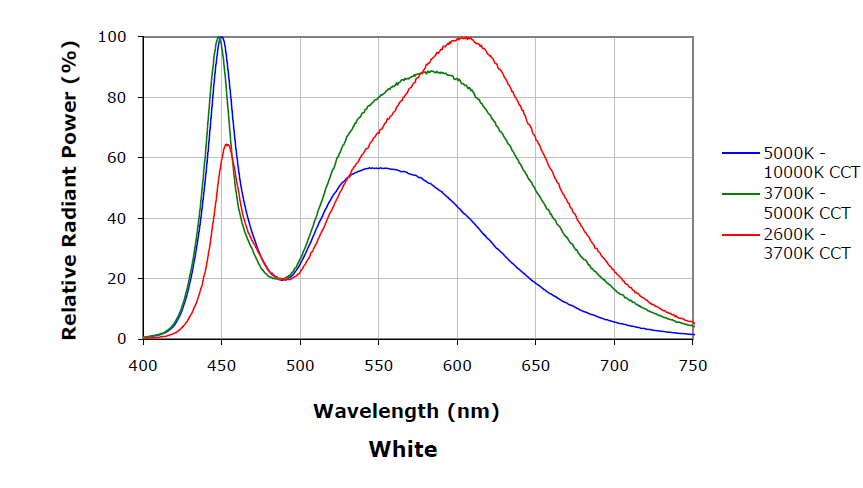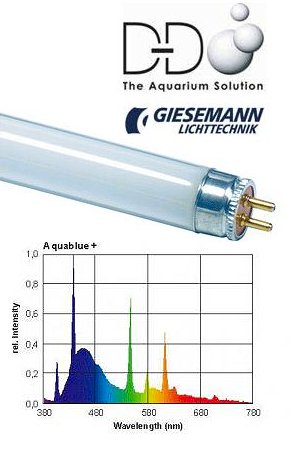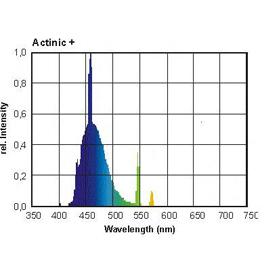To dim or not??
- Thread starter lbannie
- Start date
snakeblitz33
Well-Known Member
Quote:
Originally Posted by GeoJ http:///t/393193/to-dim-or-not#post_3496094
I would use a dimmer for each color LED, on all fixtures.
+1
Originally Posted by GeoJ http:///t/393193/to-dim-or-not#post_3496094
I would use a dimmer for each color LED, on all fixtures.
+1
snakeblitz33
Well-Known Member
acrylic51
Active Member
The big question is what are the specs of the additional LEDs??? Meaning the reds, green, purples and the different blues?
It has been noted that the white/blue combination is lacking and doesn't provide all the spectrums needed, so a short simple answer is no on just the white/blue combination.
It has been noted that the white/blue combination is lacking and doesn't provide all the spectrums needed, so a short simple answer is no on just the white/blue combination.
luvmyreef
Active Member
Quote:
Originally Posted by SnakeBlitz33 http:///t/393193/to-dim-or-not#post_3496239

LOL, I just saw this!

Originally Posted by SnakeBlitz33 http:///t/393193/to-dim-or-not#post_3496239

LOL, I just saw this!

novahobbies
Well-Known Member
Quote:
Originally Posted by acrylic51 http:///t/393193/to-dim-or-not#post_3496428
The big question is what are the specs of the additional LEDs??? Meaning the reds, green, purples and the different blues?
It has been noted that the white/blue combination is lacking and doesn't provide all the spectrums needed, so a short simple answer is no on just the white/blue combination.
Shawn, Can you clarify more on this?
You know that I have great respect for your electronic know-how, but I want to ask an honest question....and maybe I'm just not seeing the "big picture," so I'd be grateful for your thoughts on this.
How is it that LED fixtures that are Blue and White can be "lacking," when the old standby fixtures only contained these spectrums? Let's use the basic standard 4-bulb HO T5 light for our example. You'd have two bulbs that were rated as, say, 420-460nm actinic blues, and two bulbs that were rated at 10,000 kelvin white. I'm going to say that 85% of the long-timers on these boards had one of these fixtures at SOME point in their hobby.....probably more than 85% in fact.
 We've all seen coral flourish and grow under these bulbs and light choices, with no observable adverse affects as long as we took the coral's light absorption into account.
We've all seen coral flourish and grow under these bulbs and light choices, with no observable adverse affects as long as we took the coral's light absorption into account.
Now along come LEDs, with similar color temperatures and wavelengths to the above mentioned T5 bulbs. You can find 3w LEDs that are rated for 460, 420, etc nm wavelength for deep blues, and as many LEDs that are Kelvin-rated for our white bulbs. With those quantifiers in mind......how can they be "lacking" in spectrum?
I do understand that LEDs put out a very specific wavelength....that's what they are meant to do. Do the T5 bulbs, or MH's, have a wider range of generated wavelengths that the LEDs don't replicate?? Or is this actually new research that has shown up with the recent LED fixtures?
Now....to get this back on track....LeAnne, I DO have two modules of the Chinese LED fixtures, and I don't think I would be nearly as happy with mine if they weren't dimmable. Besides, I suspect that the dimmable Chinese fixtures may be able to be DIYed with an aquarium controller at some point as well...it's something I intend to experiment with if I ever decide to take the controller plunge.
As for my LED fixture......I really love the color of the blue and white, but I do plan on adding a diy strip or two with some alternate color choices to supplement the Chinese units.
Originally Posted by acrylic51 http:///t/393193/to-dim-or-not#post_3496428
The big question is what are the specs of the additional LEDs??? Meaning the reds, green, purples and the different blues?
It has been noted that the white/blue combination is lacking and doesn't provide all the spectrums needed, so a short simple answer is no on just the white/blue combination.
Shawn, Can you clarify more on this?
You know that I have great respect for your electronic know-how, but I want to ask an honest question....and maybe I'm just not seeing the "big picture," so I'd be grateful for your thoughts on this.
How is it that LED fixtures that are Blue and White can be "lacking," when the old standby fixtures only contained these spectrums? Let's use the basic standard 4-bulb HO T5 light for our example. You'd have two bulbs that were rated as, say, 420-460nm actinic blues, and two bulbs that were rated at 10,000 kelvin white. I'm going to say that 85% of the long-timers on these boards had one of these fixtures at SOME point in their hobby.....probably more than 85% in fact.

Now along come LEDs, with similar color temperatures and wavelengths to the above mentioned T5 bulbs. You can find 3w LEDs that are rated for 460, 420, etc nm wavelength for deep blues, and as many LEDs that are Kelvin-rated for our white bulbs. With those quantifiers in mind......how can they be "lacking" in spectrum?
I do understand that LEDs put out a very specific wavelength....that's what they are meant to do. Do the T5 bulbs, or MH's, have a wider range of generated wavelengths that the LEDs don't replicate?? Or is this actually new research that has shown up with the recent LED fixtures?
Now....to get this back on track....LeAnne, I DO have two modules of the Chinese LED fixtures, and I don't think I would be nearly as happy with mine if they weren't dimmable. Besides, I suspect that the dimmable Chinese fixtures may be able to be DIYed with an aquarium controller at some point as well...it's something I intend to experiment with if I ever decide to take the controller plunge.
As for my LED fixture......I really love the color of the blue and white, but I do plan on adding a diy strip or two with some alternate color choices to supplement the Chinese units.
novahobbies
Well-Known Member
geoj
Active Member
Shawn, Can you clarify more on this?
You know that I have great respect for your electronic know-how, but I want to ask an honest question....and maybe I'm just not seeing the "big picture," so I'd be grateful for your thoughts on this.
How is it that LED fixtures that are Blue and White can be "lacking," when the old standby fixtures only contained these spectrums? Let's use the basic standard 4-bulb HO T5 light for our example. You'd have two bulbs that were rated as, say, 420-460nm actinic blues, and two bulbs that were rated at 10,000 kelvin white. I'm going to say that 85% of the long-timers on these boards had one of these fixtures at SOME point in their hobby.....probably more than 85% in fact. :laughing: We've all seen coral flourish and grow under these bulbs and light choices, with no observable adverse affects as long as we took the coral's light absorption into account.
Now along come LEDs, with similar color temperatures and wavelengths to the above mentioned T5 bulbs. You can find 3w LEDs that are rated for 460, 420, etc nm wavelength for deep blues, and as many LEDs that are Kelvin-rated for our white bulbs. With those quantifiers in mind......how can they be "lacking" in spectrum?
I do understand that LEDs put out a very specific wavelength....that's what they are meant to do. Do the T5 bulbs, or MH's, have a wider range of generated wavelengths that the LEDs don't replicate?? Or is this actually new research that has shown up with the recent LED fixtures?
Now....to get this back on track....LeAnne, I DO have two modules of the Chinese LED fixtures, and I don't think I would be nearly as happy with mine if they weren't dimmable. Besides, I suspect that the dimmable Chinese fixtures may be able to be DIYed with an aquarium controller at some point as well...it's something I intend to experiment with if I ever decide to take the controller plunge.
As for my LED fixture......I really love the color of the blue and white, but I do plan on adding a diy strip or two with some alternate color choices to supplement the Chinese units.


So the two above show the Cree xp-e colors Blue and Royal blue very short span in wavelength 15-20nm


The two above show the Cree xp-e Whites, much much better in wavelength, but most of the light is 525-650nm green, yellow, and orange


These show some T5s note how flat or rounded the charts are, this shows how much more wavelength coverage they have over Cree LEDs. The Actinic is showing 50+ nm of coverage. The Aquablue chart shows that most the light is of 400-500nm.


